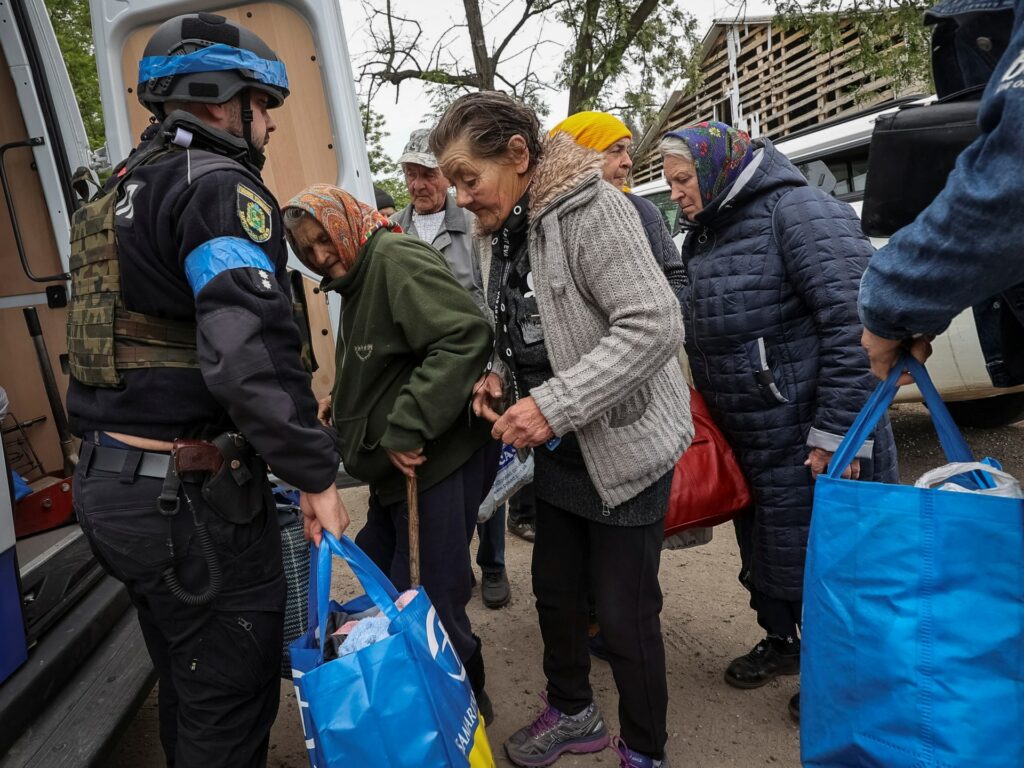Zelenskyy warns Russia’s Kharkiv offensive may only be ‘first wave’
President says Ukraine has a quarter of air defences required to hold front line as Russia advances along northeastern border.
Russia’s offensive in Ukraine’s northeastern border region of Kharkiv may just be the “first wave” in a wider assault, Ukrainian President Volodymyr Zelenskyy has warned as he appealed to allies to send more air defence and fighter jets.
Russian forces, which had made only moderate advances in recent months, launched a surprise assault in the Kharkiv region on May 10 that resulted in their biggest territorial gains in a year and a half.
Zelenskyy conceded on Friday, in an interview with the AFP news agency, that Ukraine only has a quarter of the air defences it needs to hold the front line while the war grinds on.
He said Russian forces managed to advance between five to 10km (3-6 miles) along the northeastern border before being stopped by Ukrainian forces.
On Saturday, Kharkiv’s Governor Oleg Synegubov said “a total of 9,907 people have been evacuated” from the region following a ground attack by Russian troops.
Al Jazeera’s John Holman, reporting from Kharkiv, said that at present Ukraine is “outmanned in terms of soldiers” in parts of the front line even before the latest Russian attacks.
“Ukraine said that there were seven Russian soldiers to one Ukrainian soldier, so that’s going to put fresh pressure on them,” he said.
In an effort to increase troop numbers, Zelenskyy signed two laws, one to enable prisoners to join the army and another that increases fines for draft dodgers fivefold, which go into effect on Saturday.
The president acknowledged that Russian forces were “going deeper into our territory”, adding that in order to achieve at least a level of air “parity” with Russia, Ukraine needs “120 to 130” F-16 fighter jets or other advanced aircraft.
President Vladimir Putin said on Friday that the offensive in the Kharkiv region is aimed at creating a buffer zone and Russia has no plans to capture the city of Kharkiv.
Speaking to reporters while on a visit to China, Putin said Moscow launched its attacks in response to Ukrainian shelling of Russia’s neighbouring Belgorod region.
“I have said publicly that if it continues, we will be forced to create a security zone, a sanitary zone,” he said. “That’s what we are doing.”
Meanwhile, the commander-in-chief of the Armed Forces of Ukraine, Colonel General Oleksandr Syrskii, said Russia’s new offensive has “expanded the zone of active hostilities” by almost 70km (45 miles) to attempt to force Ukraine to spread its forces and use reserve troops.
In response to the new attacks, Ukraine launched a counterstrike and drone raids on the Russian-occupied Ukrainian territory of Crimea.
A Ukrainian intelligence official confirmed to The Associated Press news agency that the country’s intelligence services struck Russia’s military infrastructure sites in Novorossiysk, on the Black Sea coast, and in the Russian-occupied city of Sevastopol.
The operation, carried out by Ukraine-built drones, targeted Russian Black Sea Fleet vessels, the unnamed official said.
Russia’s Ministry of Defence said 51 Ukrainian drones were downed over Crimea, 44 over the Krasnodar region of Russia and six over the Belgorod region. Russian warplanes and patrol boats also destroyed six sea drones in the Black Sea, it said.
Mikhail Razvozhayev, the governor of Sevastopol, which is the main base for Russia’s Black Sea Fleet, said the drone attack damaged the city’s power plant.
Source: Al Jazeera and news agencies
#Zelenskyy #warns #Russias #Kharkiv #offensive #wave
Long-Term Implications and Future Developments of Russia-Ukraine War
The ongoing conflict between Russia and Ukraine in the northeastern border region of Kharkiv has escalated significantly in recent days, with Ukrainian President Volodymyr Zelenskyy warning that this may just be the “first wave” in a wider assault. The Russian offensive has resulted in significant territorial gains, putting pressure on Ukraine’s already limited air defences.
As the war continues, it is crucial for Ukraine to bolster its air defence capabilities to hold the front line and prevent further advances by Russian forces. President Zelenskyy’s appeal to allies for more air defence systems and fighter jets highlights the urgent need for international support in the face of escalating aggression.
The increase in troop numbers through new laws allowing prisoners to join the army and harsher penalties for draft dodgers is a step in the right direction, but Ukraine still faces significant challenges in terms of manpower and resources. The disparity in soldiers on the front line, with seven Russian soldiers to one Ukrainian soldier in some areas, underscores the need for reinforcements and strategic planning.
Looking ahead, the expansion of the active hostilities zone by Russia and the counterstrikes launched by Ukraine indicate a deepening of the conflict. The targeting of Russian military infrastructure sites in Crimea and Novorossiysk demonstrates Ukraine’s determination to push back against Russian aggression, even at the risk of further escalation.
In the long term, the implications of the Russia-Ukraine war are far-reaching, with potential consequences for regional stability and international relations. The continued fighting and humanitarian crisis in Ukraine require a concerted effort from the international community to address the root causes of the conflict and support those affected by the violence.
Actionable Advice:
- Urgently prioritize the delivery of air defence systems and fighter jets to Ukraine to bolster its defences against Russian aggression.
- Support diplomatic efforts to de-escalate the conflict and seek a peaceful resolution through dialogue and negotiation.
- Provide humanitarian aid to those affected by the war and support efforts to protect civilians from the impact of the fighting.
- Monitor the situation closely and stay informed about developments in the region to understand the evolving dynamics of the conflict.

